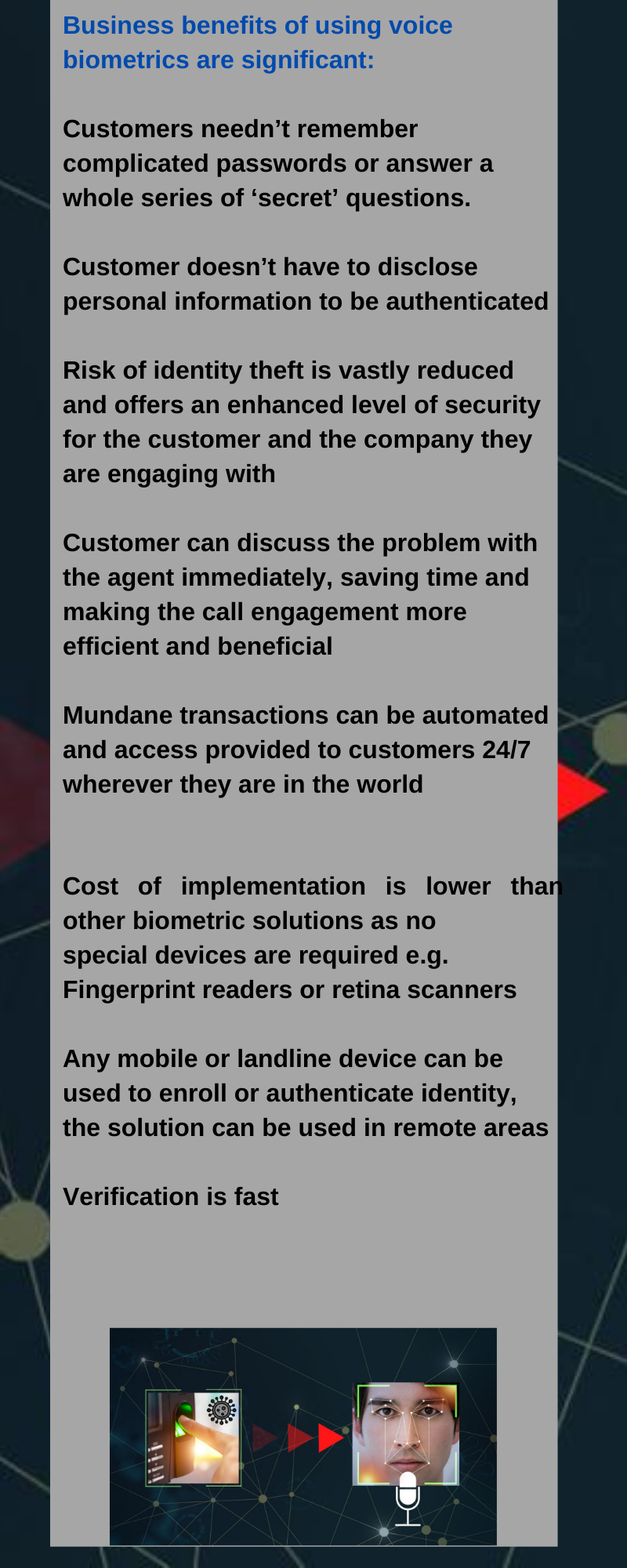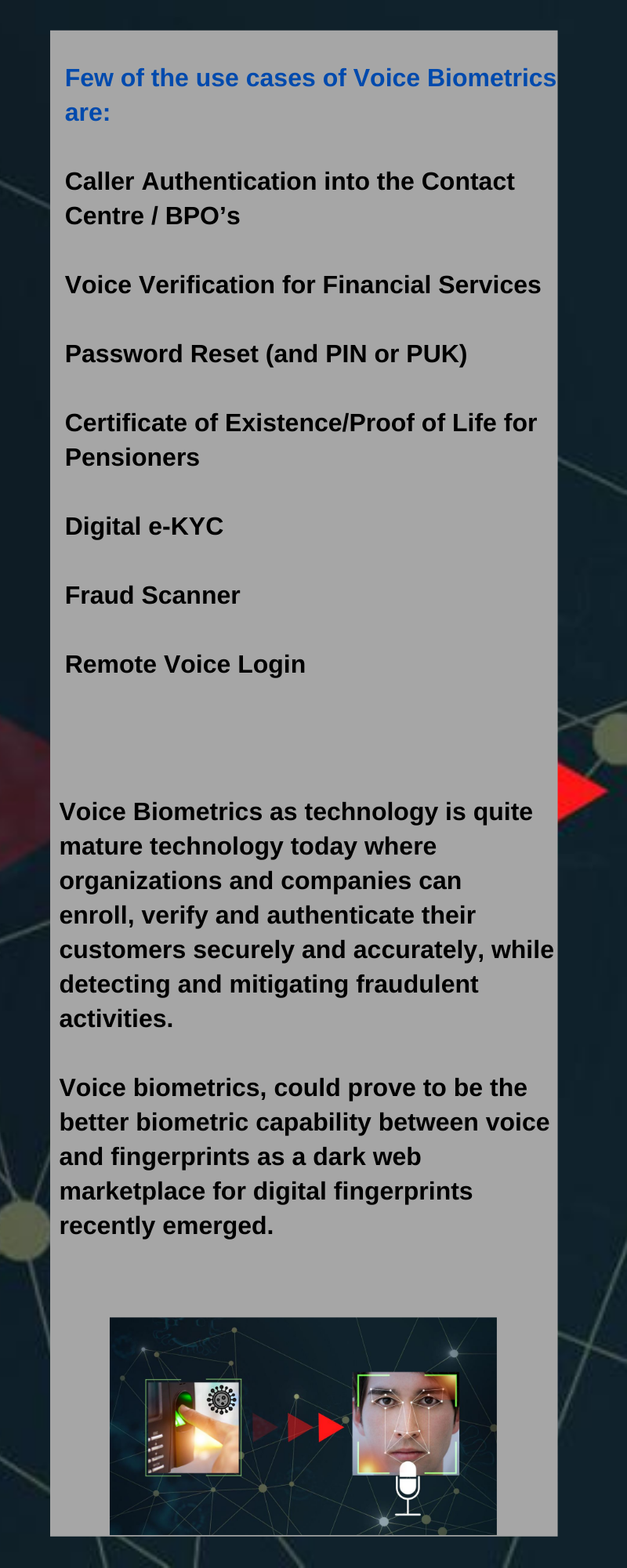Delhi: Fingerprint biometrics is a commonly used credential in access control systems worldwide. It has become the most popular form of biometric technology used in physical access control systems. Over the years, finger biometric readers have become less expensive and are now commonplace in gyms, residential buildings, and corporates.
Mostly, they rely on fingerprint biometric technology which needs the person to place their fingers on a fingerprint surface and sensor in order to match the fingerprint of the person with the template or credential on record.
Also Read: Threat Group APT29 targets COVID-19 Vaccine Development
For many years, various tests have shown there is some buildup of bacteria on fingerprint readers, especially in the short term. Like most installations, how often are these finger biometric scanners being cleaned? Or is it putting people at risk, especially due to the high volumes of pedestrian traffic and the potential of risk from other individuals using the same finger biometric scanner? Many germophobic individuals, especially in corporates, organizations and in apartment buildings, despise using them.
With a Coronavirus outbreak, people do need to avoid contact with surfaces that could have come into contact with droplets from an infected person. Therefore, finger biometrics which was earlier used to identify customers, employees and passengers are getting forbidden.
Also Read: Artificial Intelligence in Overcoming COVID-19 Crisis
Finger Biometric scanners used for attendance or identify employees to mark their attendance, authentication of customers at banks for validation of Aadhaar Cards, or passengers at immigration counters could be contaminated with strains of virus Coronavirus spreads as a result of contact with surfaces. Henceforth, finger biometric scanners, which thousands of individuals touched in a day could be infected with the Coronavirus. And due to this fear, there is a restriction in usage of contact-based biometric access control for time attendance, authentication, access control to prevent the spread of the virus. Post COVID19, the world will definitely get affected by this change in biometric access control systems to authenticate users.
Taking into consideration the risks associated with the finger biometric access control system, both public and private organizations are now hesitant in using finger biometrics for authentication and access control. Not only are large events such as conferences, sporting events, religious services, and music festivals are being canceled to help combat the pandemic, but businesses are also beginning to look at their own technology as potential health risks to their employees as well.
Col Inderjeet further explains the most common questions which arise in our minds. Do we then avoid using fingerprint readers? If so what alternative technology is out there and how secure is it?
Col Inderjeet suggests, " Options available for identification and authentication are contactless biometric systems. Facial Recognition and Voice Biometric technology are gaining ground here."
To achieve security and safety, facial Recognition and Voice Biometrics can help reduce the spread of the coronavirus. In both these authentications and access control techniques, no physical contact is required with any device, the installed system simply captures the picture of the face or voice of the individual for authentication. Due to fear of coronavirus, the people at public places are now wearing masks, which is an obstacle in an individual’s verification. This challenge can be dealt with advanced facial recognition technology that can intelligently recognize masked-individuals.
In addition, a single authentication technique is never foolproof, therefore, Voice Biometrics is the technology that complements in authenticating the users and providing access to valid users. Voice Biometrics is a 3rd-factor authentication method in that it is related to something you are rather than something you have (1st-factor authentication e.g. an identity book, passport, etc.) or something you know (2nd-factor authentication e.g. a password, pin or mother’s maiden name).
Both these technologies can help repress the spread of coronavirus pandemic in many ways. The effective way to prevent the spreading of this disease is to avoid being exposed to the virus. As there is not one source and coronavirus patients are everywhere, the virus will likely spread like a wildfire. Any place that has anything that requires physical contact can create ruinous circumstances, for example, fingerprint scanners installed on the checkpoints. Therefore, facial recognition and Voice Biometric technology are an effective method for verifying credential in access control systems.
Voice Biometrics compares speech patterns by combining behavioral and physiological factors that can be captured by processing speech technology. This is similar to other well-known biometric technologies such as fingerprint and retina scanning – and equally secure – however, it is the only practical means of authenticating a speaker over a remote channel e.g. a phone or Laptop. The most important properties used for speech authentication are nasal tone, fundamental frequency, inflection, and cadence.
Voice recognition can be separated into different categories based on the kind of authentication domain, such as a fixed text method, in the text-dependent method, the text-independent method, and conversational technique.
Therefore, with continually rising security standards and increased cybercrime sophistication has put enormous pressure on banks, insurance companies, and other financial services providers to maintain high account security while keeping customers’ access over the phone as convenient as possible. By enhancing multi-factor authentication with passive voice biometric verification, customers can be verified seamlessly as they speak in just a few seconds and without the need to remember other security questions. Many business benefits can be availed using voice biometrics.


Face Recognition can identify or verify a person from a digital image by comparing and analyzing patterns. This biometric system is being used effectively for authentication and access control in numerous areas. Facial recognition systems can recognize up to 80 nodal points on a human face. Nodal points are nothing but endpoints used to measure variables on a person’s face, which includes the length and width of the nose, cheekbone shape, and eye socket depth.
Face recognition systems work by capturing data for the nodal points on a digital image of a person’s face and resulting data can be stored as a face print. When the conditions are favorable, these systems use face prints to identify accurately. Currently, these systems focus on smartphone applications which include personal marketing, social networking, and image tagging purposes. Social sites like FB uses software for face recognition to tag the users in photographs. This software also increases marketing personalization.

Multimodal biometrics for strong authentication. For increased security, a combination of biometrics, also called multimodal biometrics, provides greater accuracy and more flexibility than a single biometric. Therefore, a combination of face and voice traits, which can be captured at the same time, for greater fraud protection and easy user experience.
You simply look at the camera speak in microphone and both facial and voice are captured; the biometric authentication software analyses your face and voice in a using sophisticated algorithm. Each trait is analyzed separately and given its own score. The results are combined using a fusion algorithm to provide a single yes/no decision. Depending on the application and channel, a combination with additional factors (e.g. geolocation, device-ID) may be selected.
Both the above-mentioned technologies which are contactless and when used in the multimodal model give accurate results in the authentication of users. These of course are the best fit technologies for the future requirements to replace finger biometrics.
You can follow Col. Inderjeet on twitter @inderbarara, insta:inderbarara.
Also Read: Deepfakes: The dark side of Artificial Intelligence



